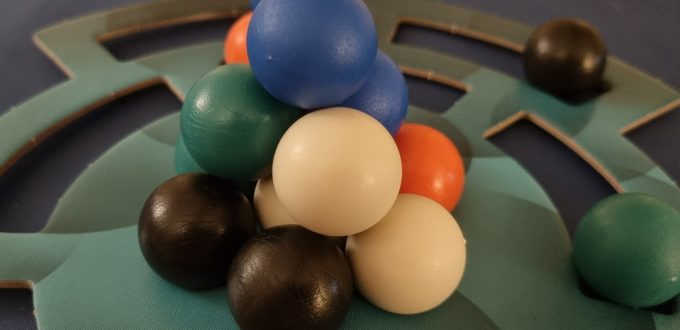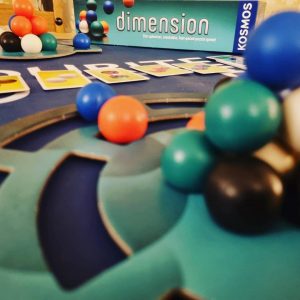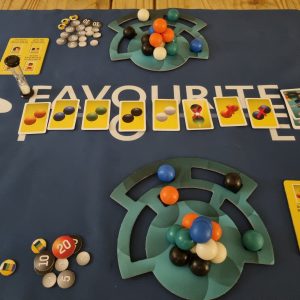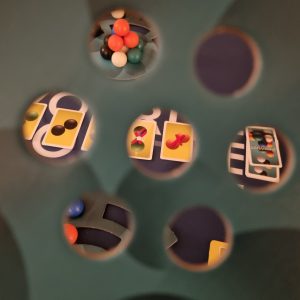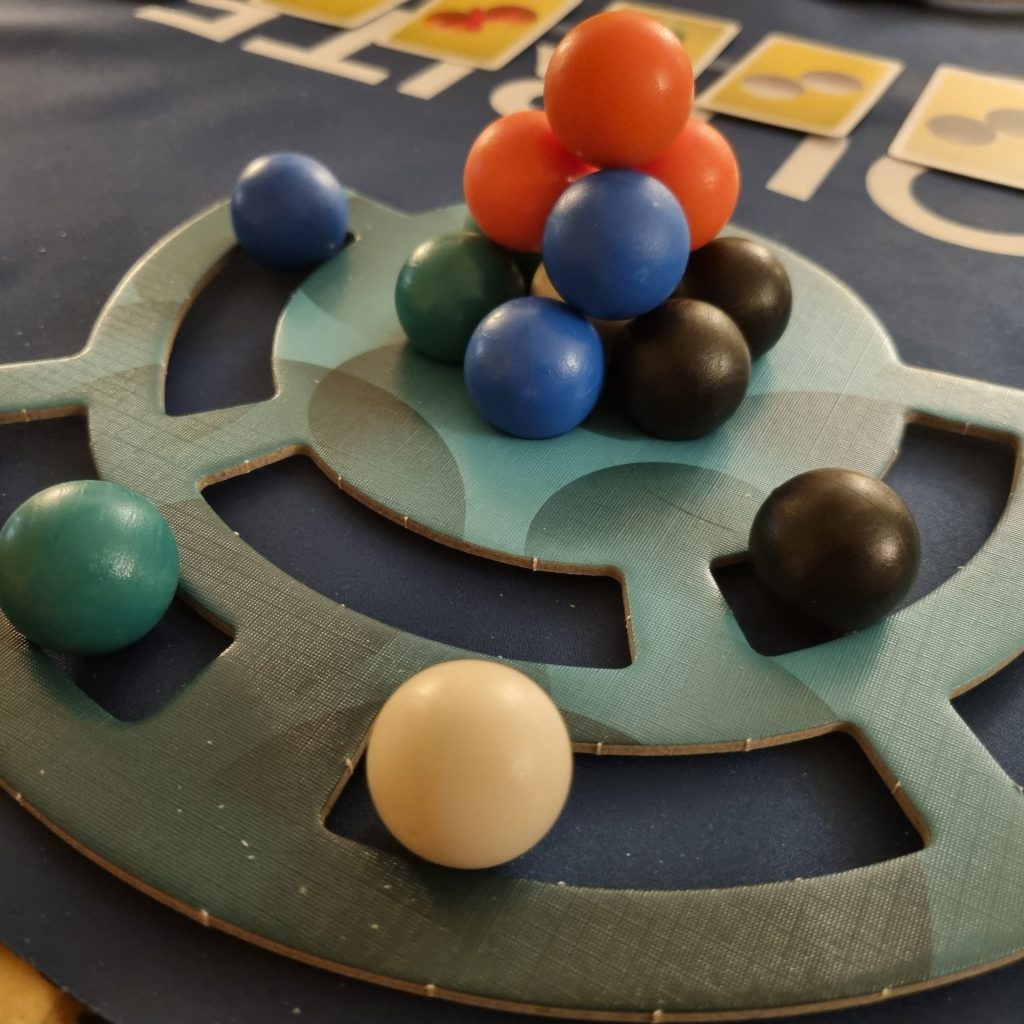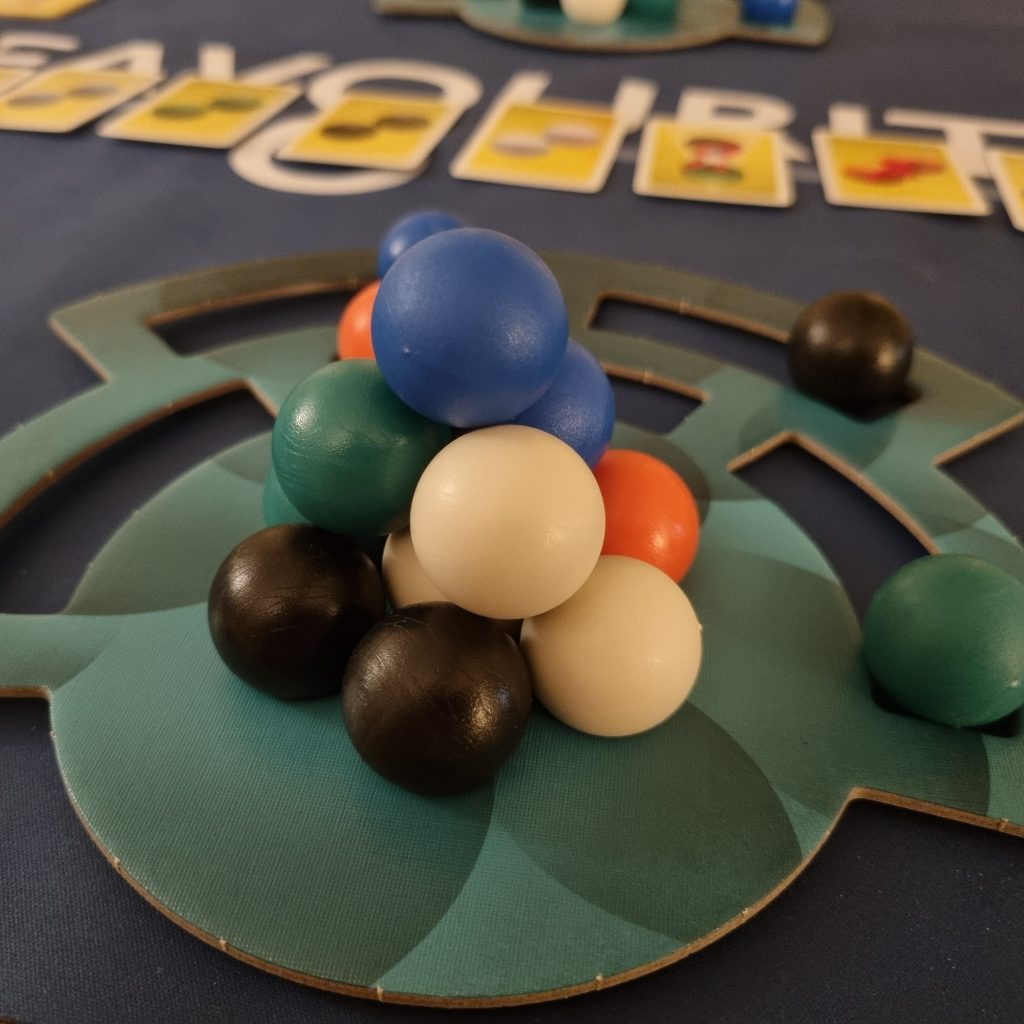Puzzling pyramids? In Dimension from KOSMOS, the name of the game says it all; a hands-on 3D spatial puzzle that’s fun for everyone!
Publisher: KOSMOS
Designer: Lauge Luchau
Artist: Sensit Communication GmbH
Release date: 2015
1-4 Players
Age: 8+
30 mins
Favouritefoe score: 9/10
Learn More
* 3D * Spatial * Simultaneous Play * Puzzle * Abstract * Pattern Matching * Realtime * Accessible * Dexterity * Family Fun *
KOSMOS are doing something cool. They have done it before, of course (hint: look at Aqualin and Ubongo!). But, in Dimension, they have definitely done it again. “What is it?” you might ask. Well, they are making abstract strategy games fun. And not just that, but fun for all the family!
I must admit that I hadn’t heard of Dimension before I was kindly passed a copy for review. And when I saw the box, I thought it was a straight up dexterity game. Stacking coloured spheres to build pyramids at high speed. Sounded fun, but not much to it. And with a hand disability, I guessed I would be coming in last every time. Which I am fine with, don’t get me wrong –Mini-meeple loves a good stack ‘em and crack ‘em type game, and I would never refuse to play them with him. But I like to know that’s what I am in for when I come to the table.
I was wrong. Dimension isn’t a dexterity game although it does involve building. Dimension isn’t a race against each other although it does involve a timer. Dimension is in fact an accessible, family friendly, fun, abstract puzzle game for 1-4 players!
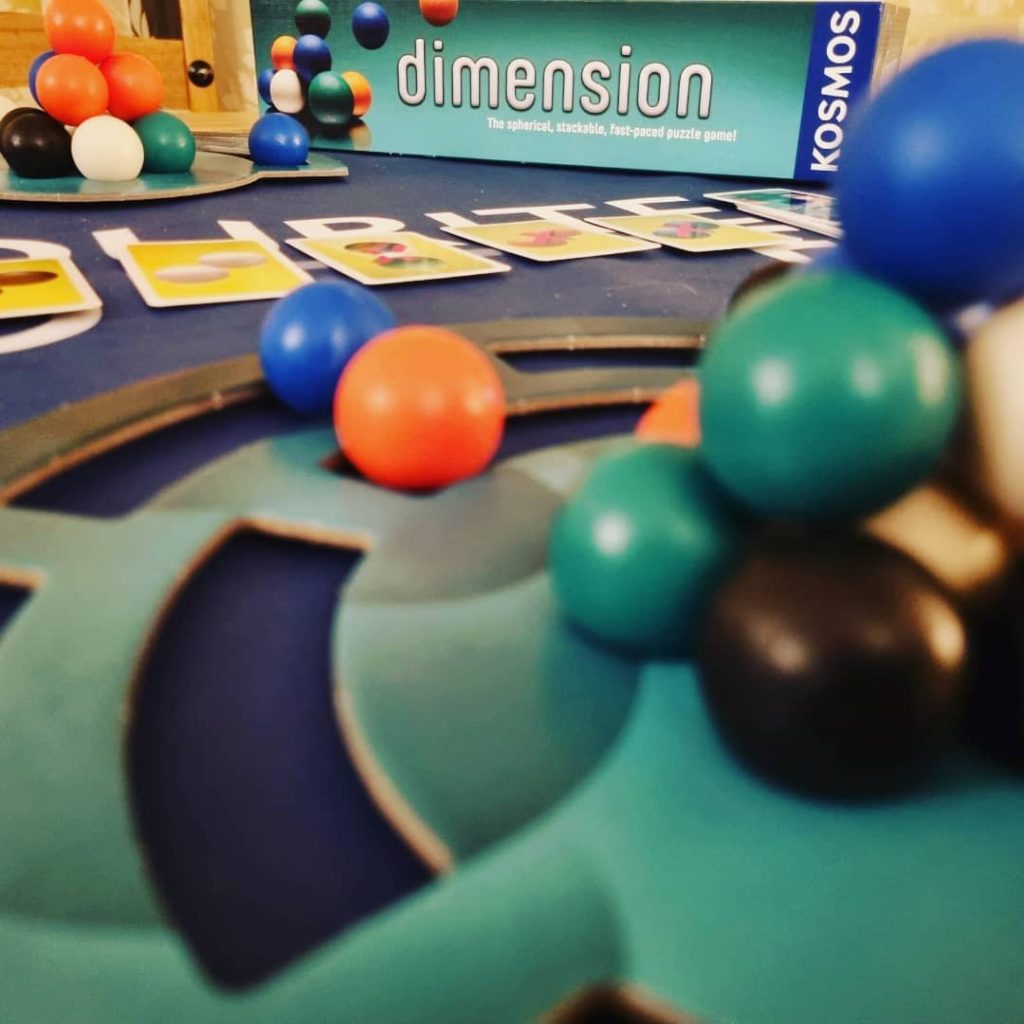
So, how does it play?
Setting Up and Stacking Spheres!
Each round, you have your own board (note: the little rubber feet are an absolute blessing!) and set of 15 spheres (3 each of 5 different colours). You also start with 10 points (niiiiice!!). Then, having shuffled the pile of objective cards, 6 are picked at random and flipped face up.
The cards show the “tasks” that you’re trying to achieve when forming your pyramid that round. They are a real mixture and include things like:
- Orange and green spheres must not touch;
- Blue spheres cannot be below any other sphere; or
- There must be more white spheres in play than black spheres etc.
When the timer is started, you all have 60 seconds to build your own pyramids. Once the time runs out, it’s time to stop and score for that round.
And point awarding is both friendly and fiendish. A round never ends in a sharp win/lose type situation. You get a point for each ball you use in your pyramid, no matter how low or high you reach. As such, going big every time is the ideal situation. Then if you manage to build your structure according to all six tasks in play that round, you get a bonus token.
For each task you don’t smash, however, you get two points deducted from your round total, and no bonus tile for you! So far, so sort-of friendly. However, and here’s a sneaky kicker; as you would expect, bonus tokens reward extra points at end game. But, if you haven’t achieved a specific number of bonus tokens by that time, you get a big penalty in the form of negative points!
To begin a new round, you clear the run of tasks and flip 6 new ones from the stack. Return your spheres to the holding rows on your board, and then flip the timer back.
After 6 rounds, the game ends, and whoever has the most points (after making any adjustments for bonus tokens) is the winner of Dimension!

Popular Pyramids!
Dimension is proving to be a great choice for us. The rule set is super simple, the rounds are fast, and everybody has a chance to gain at least some points every round. Plus, most important of all, it is fun, spatial puzzly play for everyone around our table that can be played again and again!
Whilst there is a timer, this game isn’t a race against each other. It is a race against the sands of time and the tasks in hand. This makes it feel less combative, but no less puzzly or enjoyable. In fact, for Mini-meeple, it is a little bit less pressurised – going up against Daddy is always a tall order (and not just because he is 6′ 3″!).
First game in, the pyramid penny also dropped, and by that I mean the name “Dimension” suddenly made complete sense. And that’s quite satisfying when it comes to abstract strategy games. Dimension is without doubt about thinking and testing you to think in multiple directions at the same time!
Being a self-confessed, spatially challenged gamer, I am also really pleasantly surprised that I don’t absolutely stink at playing it! I’m not sure whether It’s due to the fact that there are multiple chances to score points each round. Or that the pain of not doing well on a given round is so fleeting that my brain doesn’t waste precious time post-morteming my choices and berating myself for bad building. It actually feels like a game of equals. Some rounds, Mini-meeple hits all the tasks, other rounds it’s me. With the same set of coloured spheres, it’s simply down to how well we visualise a particular combination within our own constructions. And that can make it hard for any one player to get too far ahead which keeps everyone interested to the end.
I have no doubt that once my husband gets into the groove, he will start racking up bonus tiles. But, thanks to another brilliant, unusual feature of this abstract game – aka solo play – I can practice without him! And, if we are all going head to head on the pyramid piling points, we can increase the tasks to 8 per round for even more brain bending dimensional fun!

Contradictory Cards!
Thinking of going from 6 – 8 tasks, we also discovered quite early on that this game has a sneaky side. And not just in the scoring. With multiple task types featuring variations using a limited number of colours, randomly selected cards can (and will!) contradict each other. For example, we had a round where we had to stack more white than orange, but fewer green than white, and at least 2 white and green spheres amongst the six tasks. It made achieving maximum marks impossible, but these sticky situations are so interesting in terms of seeing what each player prioritises, and is a big part of the strategic challenge. And seeing is absolutely what happens here – there is no hidden information. You can see what everybody is trying to do each round. But, with the pressure of real-time, there’s no chance to play copycat!

Pretty Perfect Pyramids!
Okay, so this game has no theme. But it’s an abstract puzzle game, so do we really need it based on bricks or set in Ancient Egypt? It also has lovely chunky components. The weighty spheres feel nice to hold, and they sit both in and on the thick (rubber footed!) boards with no obvious problems. True that the spheres are plastic (wood would have been nicer), but the box holds everything in really well. Our only real problem seems to be that the hourglass timer sticks so the length of time each round takes is an inexact science. And whilst this is a niggle, it is sometimes very handy indeed! Haha
[Please note that a copy of this game was kindly provided by the publishers for review. I am not paid for my comments, however, and all opinions are my own].

